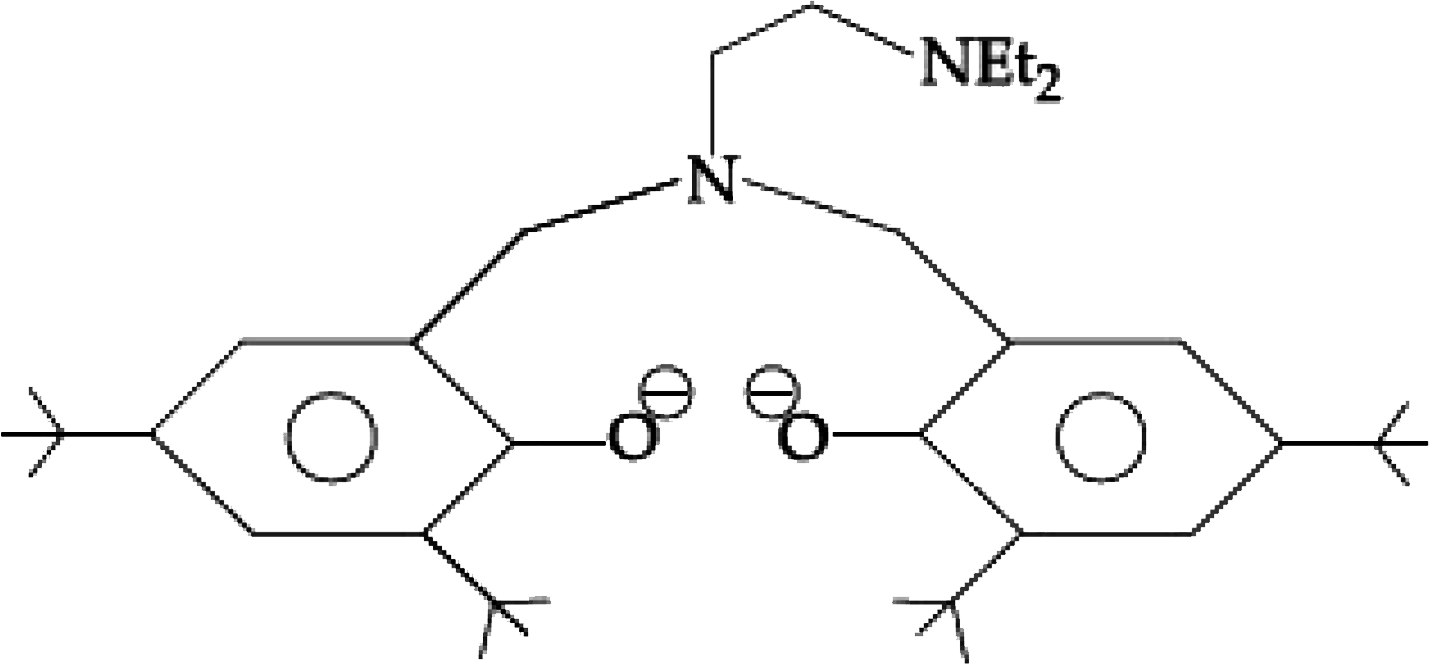Which of the following ligands will not show chelation ?
EDTA
DMG
Ethane-1, 2- diamine
SCN−
The correct Answer is:D
To determine which ligand will not show chelation, we need to understand the concept of chelation and the types of ligands involved in coordination chemistry.
1. Understand Chelation:
- Chelation occurs when a ligand forms multiple bonds with a metal ion, resulting in a ring-like structure. This is important for the stability of the complex.
2. Identify Ligands:
- Ligands can be classified based on their denticity (the number of donor atoms that can bind to a central metal atom).
- Monodentate ligands have only one donor atom and can form only one bond with the metal ion.
- Bidentate ligands can form two bonds, and polydentate ligands can form multiple bonds.
3. Determine Ligand Types:
- In the given options, identify which ligands are monodentate and which are bidentate or polydentate.
- For example, thiocyanate (SCN⁻) is a monodentate ligand because it can only attach to the metal through one atom (the sulfur or nitrogen).
4. Conclusion:
- Since monodentate ligands cannot form ring structures with metal ions, they do not exhibit the chelation effect.
- Therefore, the ligand that will not show chelation is thiocyanate (SCN⁻).
Final Answer:
The ligand that will not show chelation is thiocyanate (SCN⁻).
---
- Chelation occurs when a ligand forms multiple bonds with a metal ion, resulting in a ring-like structure. This is important for the stability of the complex.
- Ligands can be classified based on their denticity (the number of donor atoms that can bind to a central metal atom).
- Monodentate ligands have only one donor atom and can form only one bond with the metal ion.
- Bidentate ligands can form two bonds, and polydentate ligands can form multiple bonds.
- In the given options, identify which ligands are monodentate and which are bidentate or polydentate.
- For example, thiocyanate (SCN⁻) is a monodentate ligand because it can only attach to the metal through one atom (the sulfur or nitrogen).
- Since monodentate ligands cannot form ring structures with metal ions, they do not exhibit the chelation effect.
- Therefore, the ligand that will not show chelation is thiocyanate (SCN⁻).
The ligand that will not show chelation is thiocyanate (SCN⁻).
Topper's Solved these Questions
- BOOK - NCERT FINGERTPS ENGLISHCHAPTER - COORDINATION COMPOUNDS EXERCISE - HOTS8videos
COORDINATION COMPOUNDS
- BOOK - NCERT FINGERTPS ENGLISHCHAPTER - COORDINATION COMPOUNDS EXERCISE - NCERT EXEMPLAR PROBLEMS14videos
COORDINATION COMPOUNDS
- BOOK - NCERT FINGERTPS ENGLISHCHAPTER - CHEMISTRY IN EVERYDAY LIFE EXERCISE - NCERT Exemplar15videos
CHEMISTRY IN EVERYDAY LIFE
- BOOK - NCERT FINGERTPS ENGLISHCHAPTER - ELECTROCHEMISTRYEXERCISE - Assertion And Reason15videos
ELECTROCHEMISTRY
Similar Questions
Knowledge Check
- Question 1 - Select One
Which of the following ligands does form a chelate ?
AAcetateBOxalateCCyanideDAmmonia - Question 2 - Select One
Which of the following ligand gives chelate complexes ?
AAcelateBOxalateCCyanideDAmmonia - Question 3 - Select One
A chelating agent has two or more than two donor atoms to bind to a single metal ion. Which of the following is not a chelating agent?
AThiosulphatoBOxalatoCGlycinatoDEthane-1 , 2- diamine
Which of the following ligands are π acceptor ?
View SolutionWhich of the following ligand does not as π−acid ligand?
View SolutionWhich of the following ligands is expected to bidentates?
View SolutionWhich of the following is not acid ligand?
View SolutionWhich of the following is a negative ligand
View Solution


